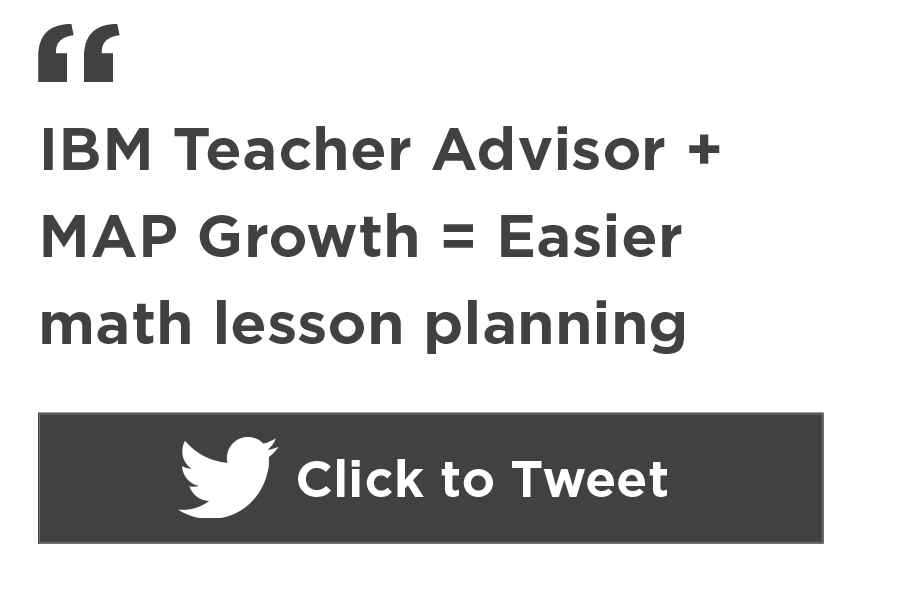As teachers prepare to head back to school—whether in person, online, or using a hybrid approach—they are confronting the question of how to keep students on track with college and career standards despite learning losses due to COVID-19.
In a previous post, Beth Tarasawa, executive vice president of research at NWEA, detailed the projected impacts that school closures are likely to have on students, particularly in math. Her research estimates that students may return to school with less than 50% of typical learning gains in math.
Such losses will only serve to widen the gap for students of color, students experiencing poverty, and emerging bilingual students who are often given significantly less access to on-grade materials. In their 2018 report, “The opportunity myth,” TNTP found that most students spent over 500 hours—approximately six months of their school year—focused on below-grade content. Lack of access and other equity issues caused by the pandemic will only serve to widen this gap.
Teacher Advisor has a library of over 10,000 high-quality open educational resources including lessons, student activities, and videos. […] And now MAP Growth users can get differentiated content based on students’ MAP Growth scores.
So how can you address these losses in your classroom while ensuring that all your students have access to grade-level standards? Carrie Phillips, senior director of school improvement services at NWEA, addressed this and other challenges in “Kick-start fall planning: 4 principles for instructional leaders.” In this document, she presents three scenarios for addressing missed learning opportunities in math while still attending to on-grade standards. One scenario involves folding missing content into the current grade-level work. While this option has many advantages, it requires both significant work for teachers and a strong knowledge of the mathematics progressions. While that may seem daunting, IBM’s free, web-based instructional planning tool, Teacher Advisor, can lighten the load by leveraging AI to do some of the heavy lifting for you.
Teacher Advisor has a library of over 10,000 high-quality open educational resources including lessons, student activities, and videos. Using topic or standards-based searches, you can find resources from EngageNY, OpenUp, Student Achievement Partners, and other highly regarded sources. And now MAP® Growth™ users can get differentiated content based on students’ MAP Growth scores, which helps reduce the preparation required to incorporate missed content into on-grade instruction.
How Teacher Advisor works
From Teacher Advisor’s home page, MAP Growth users are only a click away from the NWEA MAP Recommendation Tool.
The tool is designed to support on-grade learning by helping you group your students and connecting you to curated content related to the grade-level standard you are teaching. When you enter the tool, select your grade, the most recent testing term for which you have MAP Growth data, and the standard you are ready to teach. Click “Search,” and Teacher Advisor uses IBM Watson™ technology and the mathematics learning progressions to provide differentiated resources related to the selected standard.
As you can see, the resources are divided into four groups: RIT Range < 208, RIT Range 208–219, RIT Range 220–233, and RIT Range 234+. These groups are based on NWEA’s 2020 norms. To determine student groupings, use RIT scores for the instructional area related to the standard you have selected.
For the lower two sets of RIT ranges, the recommendations will be lessons and activities correlated to precursor standards. Use these resources for mini lessons or scaffolding activities to help students complete learning in support of the grade-level standard being taught. The third group provides on-grade resources, and the fourth group provides on-grade enrichment and application resources.
Creating a free account allows you to customize recommendations and lessons. For example, you can specify the types of recommendations you would like to see based on the needs of your students.
Based on what you select, Teacher Advisor will highlight which of the recommended resources support specific types of learners:
Creating an account also gives you the ability to customize and save lesson plans. This functionality allows you to add notes, remove lesson components, and choose from suggested activities and videos that further support differentiation. Lessons can then be saved to your Teacher Advisor Library or downloaded as a PDF.
You can do this
You’re facing so many unknowns as you go back to school this fall. How much learning will your students have lost? Which students will be most impacted by these losses? What is the best way to support all your students in whatever way leaning will happen this fall? One certainty is that you will need access to high-quality, easy-to-use resources that will help you attend to missed learning while maintaining grade-level standards. IBM Teacher Advisor is now a resource in your toolkit that can help you meet the unique challenges of this year.















